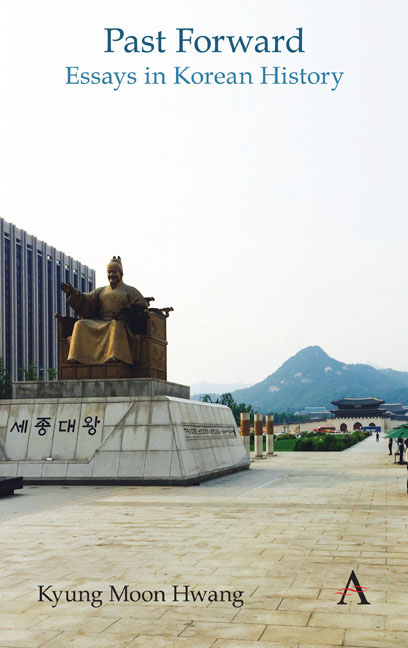Book contents
- Frontmatter
- Contents
- List of Figures
- Foreword
- Chronologies of Korean History
- Themes
- Acknowledgments
- Note on Romanization and Spelling
- Part I Circulating History
- Part II Durable Traditions
- Part III Ancient Remains
- Part IV Dynastic Depths
- Part V Modern Origins
- Part VI Challenges of Nationhood
- Part VII History Makers
- 41 Demythologizing King Sejong the Great
- 42 Modern Lady Shin Saimdang
- 43 Five Potential National Heroes
- 44 A Portrait of Great Painters
- 45 Four Young Men from 1884
- 46 Na Hye-seok
- 47 Hyundai Motors and Chung Ju-yung
- 48 Yun Isang and the East Berlin Case
- 49 Ri Young-hee, Iconoclast for Democracy
- 50 Kim Young Sam's Broad Historical Appeal
- 51 Kim Dae Jung's Historic Election
- Part VIII External Presences
- Part IX Trials of Modernization
- Part X Gripped by the Past
- Index
46 - Na Hye-seok
from Part VII - History Makers
- Frontmatter
- Contents
- List of Figures
- Foreword
- Chronologies of Korean History
- Themes
- Acknowledgments
- Note on Romanization and Spelling
- Part I Circulating History
- Part II Durable Traditions
- Part III Ancient Remains
- Part IV Dynastic Depths
- Part V Modern Origins
- Part VI Challenges of Nationhood
- Part VII History Makers
- 41 Demythologizing King Sejong the Great
- 42 Modern Lady Shin Saimdang
- 43 Five Potential National Heroes
- 44 A Portrait of Great Painters
- 45 Four Young Men from 1884
- 46 Na Hye-seok
- 47 Hyundai Motors and Chung Ju-yung
- 48 Yun Isang and the East Berlin Case
- 49 Ri Young-hee, Iconoclast for Democracy
- 50 Kim Young Sam's Broad Historical Appeal
- 51 Kim Dae Jung's Historic Election
- Part VIII External Presences
- Part IX Trials of Modernization
- Part X Gripped by the Past
- Index
Summary
I have often wondered when the South Korean film industry, with its high production values and keen marketing sense, will produce a movie about the artist Na Hye-seok (1896–1948), one of the most interesting people in modern Korean history.
If done faithfully, such a film could highlight both historically important and highly appealing themes: love, romance, family drama, sexual scandal, faith and betrayal, art, politics, nationhood and modern social change amidst an epic backdrop. These themes would be embodied in three main characters, each a major historical figure during the Japanese colonial period (1910–1945). They also formed a fascinating love triangle.
Na was a painter, poet, novelist, essayist, and one of the pioneers of Korean feminism, as she called for changes in society far ahead of her time. Born in Suwon, just south of Seoul, Na was raised in a family of means headed by a father who served as an official in the Korean government, then in the succeeding colonial government. He was, then, no anti-Japanese nationalist, and in fact he sent his daughter, in her teens, to study art in Japan.
In Tokyo, Na Hye-seok engaged in painting, writing and publishing while forming close ties to other Korean students spending their formative years in the land of Korea's colonial overlord. Upon her return to Korea at the end of the 1910s, she worked as a teacher and continued to hone her craft as an oil painter. Then, despite her time spent in Japan (or perhaps because of it), she participated in the March First Independence Movement of 1919. She was jailed for this, but eventually freed after a few months, and the lawyer hired by her family to represent her soon became her husband.
For this man, Gim U-yeong, Na would be his second wife. But like Na, he was not someone caught up in tradition. He courted her, and their “love marriage” stood out when most marriages were arranged. He even promised to let her keep painting and pursue an artistic career, which bore fruit when, two years after March First, her works were displayed in a special exhibition sponsored by the colonial authorities.
- Type
- Chapter
- Information
- Past ForwardEssays in Korean History, pp. 137 - 139Publisher: Anthem PressPrint publication year: 2019



